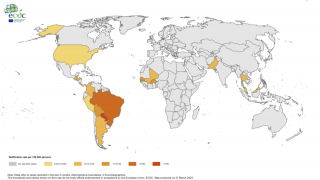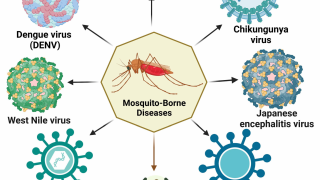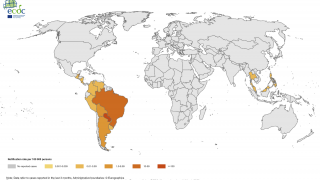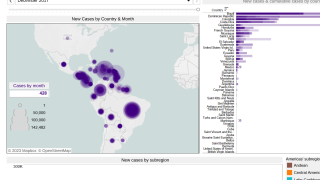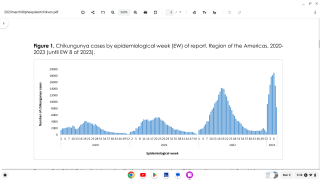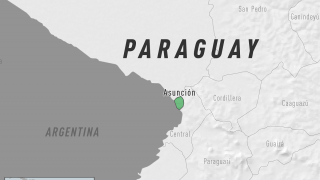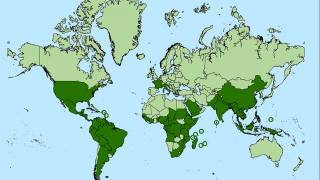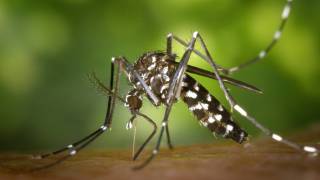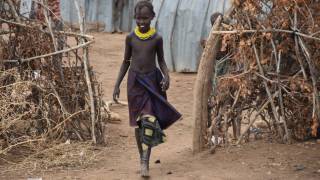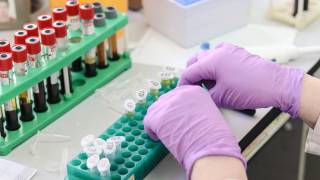Chikungunya Outbreaks in Africa Intensify

The rapid rise in cases of chikungunya in urban areas of the Republic of Chad is of concern, suggesting a ‘heavy vector (mosquito) load,’ reported the World Health Organization (WHO).
Since the first case of chikungunya was reported in the Abeche district of Chad on August 14, 2020, there have been 19,579 reported cases confirmed as of September 10th.
Most of the affected people in Chad come from 3 districts in eastern Chad: Abeche (Ouaddaï province), Biltine (Wadi Fira), and Abdi (Sila) reported the WHO.
According to Chad’s Ministry of Public Health’s statement, ‘local authorities have deployed community workers to sensitize the community on the disease and continue to disinfect entire neighborhoods and public transportation. While this disease (chikungunya) normally has a low mortality rate, the combination with other health risk factors is a concern.’
This health alert is important since Chad’s neighboring country of the Federal Democratic Republic of Ethiopia has been confronting an extensive chikungunya outbreak for the past 2-years.
From late July 2019 to December 8, 2019, Ethiopia’s health ministry reported a total of 54,908 suspected cases, with most infections reported in Dire Dawa City Administrative City.
And most recently, Chad and Ethiopia’s neighboring country of the Republic of Sudan has been inundated with rain.
The United Nations issued a warning on September 8, 2020, which says: “The situation could deteriorate over the coming days, with heavy rains forecast in Ethiopia and in several parts of Sudan. The rains are likely to increase water levels in the Blue Nile River, which are at the highest they have been in 100 years.”
The health concern is this excessive rainfall will expand disease-carrying mosquito breeding grounds.
In response to the floods, the Sudanese government has declared a 3-month national state of emergency to boost response efforts, stating that the government, UN agencies, NGOs, and the Sudanese military are assisting thousands of people in affected areas.
Chikungunya Overview
It was first described during an outbreak in southern Tanzania in 1952. Chikungunya is an illness caused by a virus that spreads through the Aedes aegypti and Aedes albopictus mosquito bites. Chikungunya is not transmitted from one person to another.
The only way to prevent chikungunya is to prevent mosquito bites. Preventing bites can be difficult, but it is important, as you can get sick after just one bite, says the U.S. CDC.
Mosquitoes become infected with chikungunya when they bite a person already infected. Once infected, a mosquito can then spread the virus to other people it bites. The mosquitoes that carry chikungunya virus bite primarily during the daytime, both indoors and outdoors, and often live around buildings in urban areas.
Mothers who have chikungunya during pregnancy do not transmit the virus to their babies. However, there are documented cases of mother-to-child transmission when the mother has a fever in the days immediately prior to delivery or during delivery, says the WHO.
Moreover, you can only have chikungunya once, then develop antibodies that will protect people. According to the evidence available so far, there would be immunity for life, says the WHO.
Chikungunya Symptoms
Symptoms of chikungunya disease usually begin 3–7 days after a person is bitten by an infected mosquito. Most people infected with the chikungunya virus develop some symptoms. The most common symptoms are fever and joint pain. Other symptoms can include headache, muscle pain, joint swelling, or rash, says the CDC.
The symptoms of chikungunya disease are similar to those of dengue and Zika, which are other diseases spread by the same mosquitoes that transmit chikungunya.
People at risk for more severe disease include newborns infected around the time of birth, older adults, and people with medical conditions such as high blood pressure, diabetes, or heart disease.
Chikungunya Infection Zones
On April 20, 2020, the U.S. CDC issued a Level 1 Travel Alert regarding the outbreak of chikungunya in Ethiopia. And the chikungunya virus is widespread in the Americas region, with several countries reporting cases in 2020.
Chikungunya virus disease has also been reported in Asia and Africa during this period. And recently the European CDC confirmed cases in Brazil, Yemen, Bolivia, and Thailand during 2020.
Chikungunya Vaccine
Currently, there is no vaccine to prevent chikungunya authorized by the U.S. FDA.
However, France based Valneva SE announced on September 8, 2020, the initiation of a pivotal Phase 3 clinical trial for its differentiated chikungunya vaccine candidate VLA1553. As a live-attenuated vaccine, VLA1553 is particularly well suited to target long-lasting protection.
This chikungunya vaccine candidate is eligible to receive an FDA Priority Review Voucher. This vaccine candidate is designed for prophylactic, active, single-dose immunization against chikungunya. The safety profile is anticipated to be similar to licensed vaccines for active immunization in adults and children.
Wolfgang Bender, M.D., Ph.D., Chief Medical Officer of Valneva, commented in a press statement, “Developing a vaccine against chikungunya is critical as the virus represents a major public health threat and there are currently no preventive vaccines or effective treatments available."
Vax-Before-Travel publishes research-based disease outbreak and vaccine development news.
Our Trust Standards: Medical Advisory Committee


